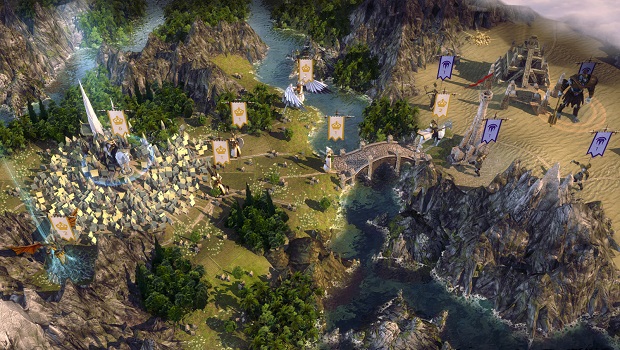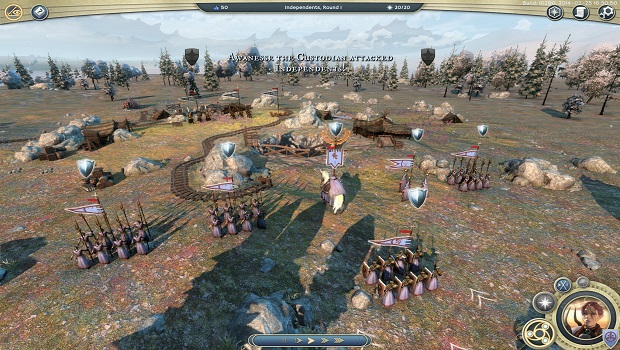Two years ago, X-COM returned from a lengthy absence and released a turn-based strategy game that instantly turned the gaming world on its head. Triumph Studios makes their attempt at a similar splash with their new release, Age of Wonders III. The Age of Wonders franchise has been dormant for about a decade, but longtime fans are eagerly anticipating this new effort. In the series’ long absence, several competitors has arisen (most notably Fall Enchantress: Legendary Heroes), but the return of the king has the strategy gaming community very intrigued.
I took Age of Wonders III for a spin, playing through the first chapter in the dark elves campaign. The game is a high fantasy, turn-based strategy game, akin to Civilization V meets the Lord of the Rings. I spent my time moving armies about the map, researching technologies, building units and buildings, and attacking and capturing cities. Among the items I was able to research were various magics I could use both in combat and on the world map, in order to advance my civilization. It very much has that one-more-turn addictive property- my first play attempt I meant to poke around the game for 20 minutes, and didn’t realize until I looked at the clock that more than two hours had passed.
The Dark Elves begin their campaign after an unspeakable tragedy, as you use your meagre forces to put back together the pieces, gain allies, and fight back against the forces of evil. I built up a hodge-podge, polyglot army, which showcased several different types of forces. There were fast moving fairies, orcs of various kinds, my own dark elves (masters of archery) and I was even able to recruit human units from a human captured city. My playthrough showcased well the varied unit types and the unique fashion in which each race would play.
The most compelling portion of the game, for me, was the tactical combat. When armies attacked their opponents, the game would switch to a tactical arena. Neighboring armies would be called into the battle for support, and then all hell would break lose. Unlike Fallen Enchantress (which uses an initiative system) Age of Wonders relies on the tried-and-true you-go/I-go resolution for its turn-based engagements. Leaders cast spells, while archers moved into position to launch their arrows from afar, and melee troops moved in for the kill. Position seemed to matter, as units that were flanked were quickly cut down, and units in contact with enemy units would suffer heavy losses if they attempted to move away- zone of control was key.
Units utilize activation points for both movement and attack- meaning that units that did not have to move launch more effective attached- archers seemed especially deadly if they could fire without having to move at all. Melee troops were effective in the same manner, but adjacent troops were permitted to counter-attack. Successful attack resulting in an XP gain, meaning that victories caused your armies to become much stronger. Those XP gains include the leaders, who were able to selectively level their stats and gain new abilities as the game progressed on.
The game had a much stronger visual style than Fallen Enchantress, as colors tended to pop. The world was vibrant and engaging, and cities, as they grew, were more compelling visually. Thus continues the recent trend in revitalizing the strategy gaming genre- stronger visuals are important, especially in games that have long playtimes. No one wants to stare at ugly brown for 30 hours.
I was entranced by my brief time with Age of Wonders III. Any game that can harness the addictive next-turn nature of the great strategy game deserves a thorough look, especially when it is the returning effort of a long beloved franchise. Age of Wonders III launches on March 31st.
This preview was written with closed beta code of Age of Wonders 3 provided by the developer.


